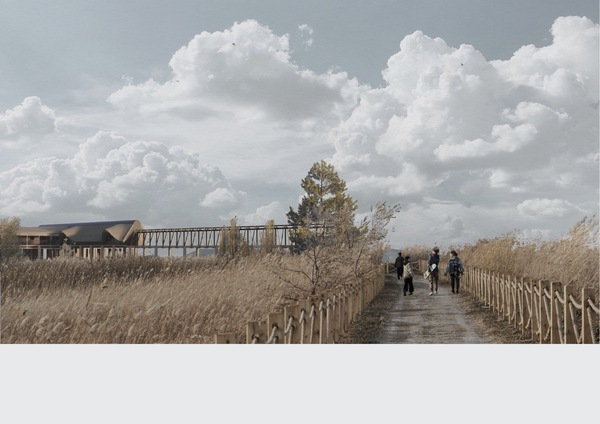Lazonby Wetland Centre
This thesis project explores how architecture can facilitate the reduction of fluvial flooding through the strategic restoration of wetlands. Specifically, the territory of the Eden Valley in Cumbria has been used as a testing ground for the design, with the primary goal of reducing flooding along the valley and in the city of Carlisle downstream, although it is envisioned that the design could be applied nationally.
A modular and nomadic HQ unit has been designed to enable and improve the efficiency of the floodplain and wetland restoration process. Once restored, these wetlands act as crucial pieces of natural infrastructure, aiding in flood prevention and bringing boosts to biodiversity and water quality. While the HQ units move from site to site, enabling the wetland restoration, permanent structures can be constructed on the sites consisting of combinations of the Stem and Nucleus units. These structures act as conservation and cultural infrastructure, teaching visitors the various benefits wetlands bring, the flora and fauna inhabiting the wetland habitat, as well as providing a facility for the stewardship and conservation of the surrounding wetland. Each site would be unique, offering different uses and experiences, from bird watching observatories to fully established visitor centres.
One such site is the Lazonby Wetland Centre, one of the four interventions proposed along the Eden. This wildlife and visitor centre has been designed in detail, envisioned as a sustainable and off grid facility housing exhibitions, a cafe, observatories, educational spaces, as well as offices for the Wildfowl and Wetland Trust and the Eden Rivers Trust. The Wetland Centre has been designed to be amphibious, sitting on stilts to protect the structure from the intermittent flooding of the wetlands and giving visitors a vantage point overlooking the sea of reedbeds and wetland surroundings.


